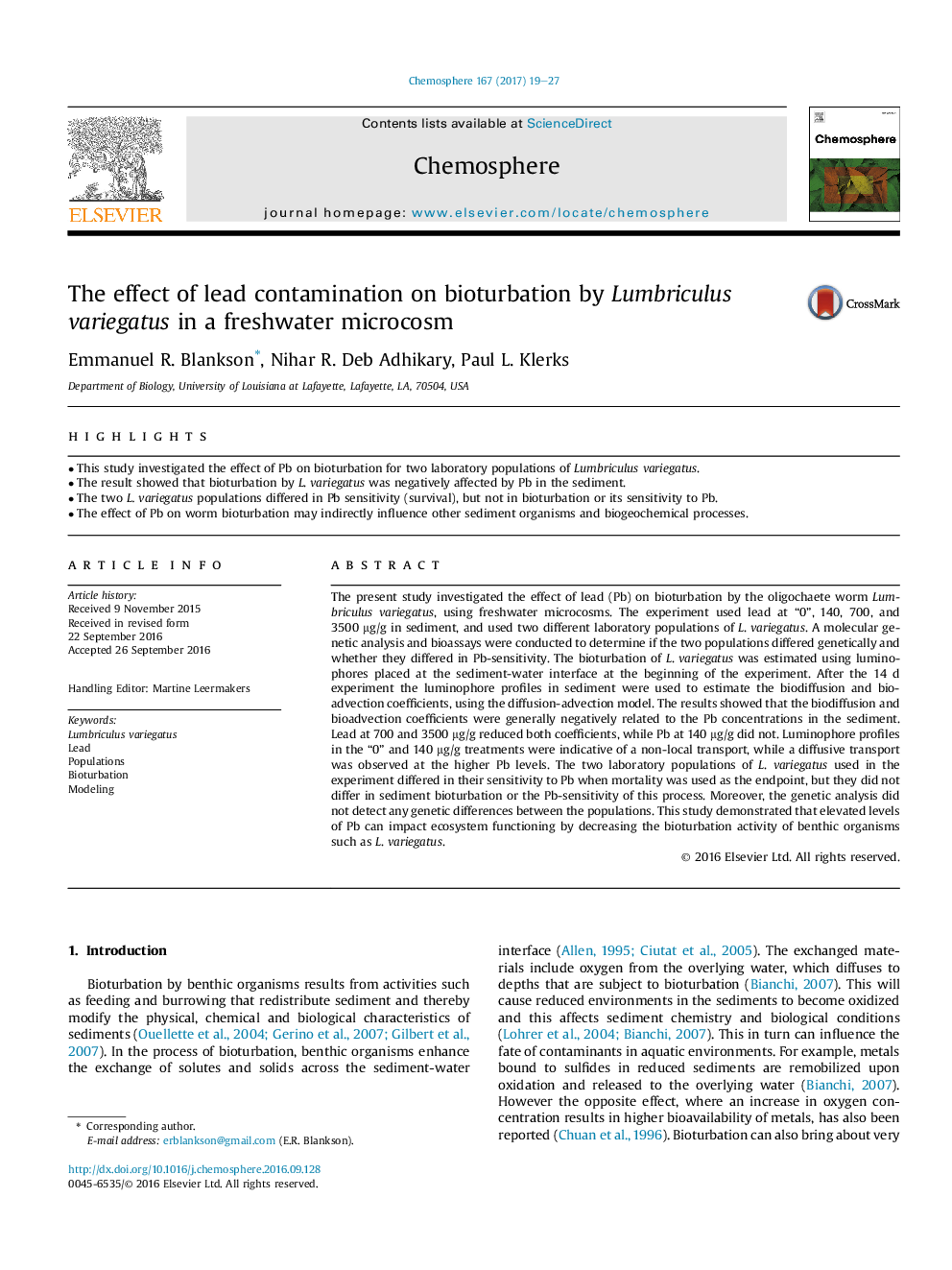| Article ID | Journal | Published Year | Pages | File Type |
|---|---|---|---|---|
| 6305923 | Chemosphere | 2017 | 9 Pages |
Abstract
The present study investigated the effect of lead (Pb) on bioturbation by the oligochaete worm Lumbriculus variegatus, using freshwater microcosms. The experiment used lead at “0”, 140, 700, and 3500 μg/g in sediment, and used two different laboratory populations of L. variegatus. A molecular genetic analysis and bioassays were conducted to determine if the two populations differed genetically and whether they differed in Pb-sensitivity. The bioturbation of L. variegatus was estimated using luminophores placed at the sediment-water interface at the beginning of the experiment. After the 14 d experiment the luminophore profiles in sediment were used to estimate the biodiffusion and bioadvection coefficients, using the diffusion-advection model. The results showed that the biodiffusion and bioadvection coefficients were generally negatively related to the Pb concentrations in the sediment. Lead at 700 and 3500 μg/g reduced both coefficients, while Pb at 140 μg/g did not. Luminophore profiles in the “0” and 140 μg/g treatments were indicative of a non-local transport, while a diffusive transport was observed at the higher Pb levels. The two laboratory populations of L. variegatus used in the experiment differed in their sensitivity to Pb when mortality was used as the endpoint, but they did not differ in sediment bioturbation or the Pb-sensitivity of this process. Moreover, the genetic analysis did not detect any genetic differences between the populations. This study demonstrated that elevated levels of Pb can impact ecosystem functioning by decreasing the bioturbation activity of benthic organisms such as L. variegatus.
Related Topics
Life Sciences
Environmental Science
Environmental Chemistry
Authors
Emmanuel R. Blankson, Nihar R. Deb Adhikary, Paul L. Klerks,
